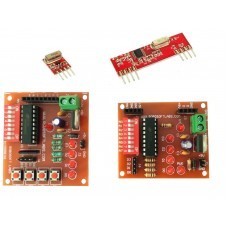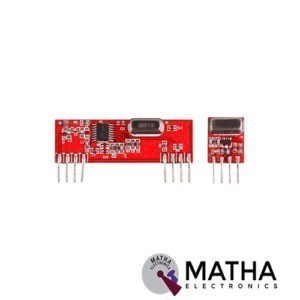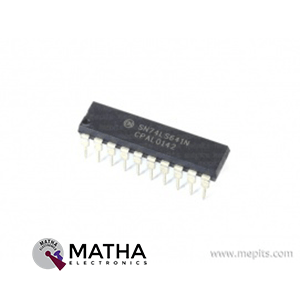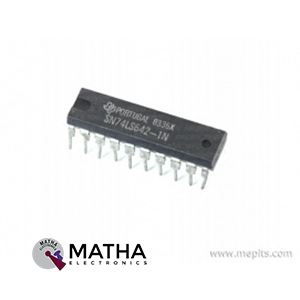434 Mhz wireless RF module is basically a superheterodyne Amplitude Shift Keying / ook (On-Off keying-based) module. This RF module designed based on an RF Transmitter and an RF Receiver operates at a frequency of 433 MHz.This RF module is often used with a pair of encoder/decoder. This is an RF Encoder & Decoder Interfacing board with HT12D & HT12E IC chips. HT12E used to encode data for RF Transmitter and HT12D used to decode the data received by the RF receiver. The module consists of a SAW resonator tuned for 433.xx MHz operation. Moreover, there is a switching transistor and a few passive components to perform the functions.
HT 12E Encoder ICs designed as series of CMOS LSIs for Remote Control system applications. It Encodes 12 bits of information which consists of N address bits and 12-N data bits. The HT 12D ICs decoder designed as a series of CMOS LSIs that pairs each other with HT12E encoder. The encoder/decoder pair should be with the same number of addresses and data formats for proper operation. The Decoder receives the serial address and data from its corresponding decoder, transmitted by a carrier using an RF transmission medium. Thus output fed to the output pins of the microcontroller after processing the data.
The Transmitter transmits encoded serial input through RF. Then the Receiver module receives the transmitted signal placed away from the source of transmission. Thus these RF signals transmitted at a particular frequency and a baud rate. The RF receiver receives the transmitted data only if it operating at the same frequency as that of the transmitter. The transmitter module comes with an RF tuned circuit and a couple of OP Amps to amplify the received carrier wave from the transmitter. This amplified signal is further fed to a PLL (Phase Lock Loop) which enables the decoder to “lock” onto a stream of digital bits. This gives better-decoded output and noise immunity.















Reviews
There are no reviews yet.